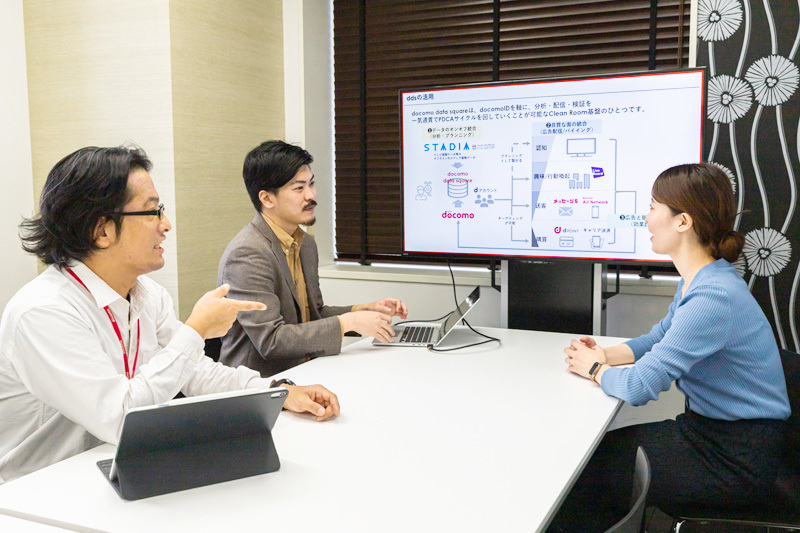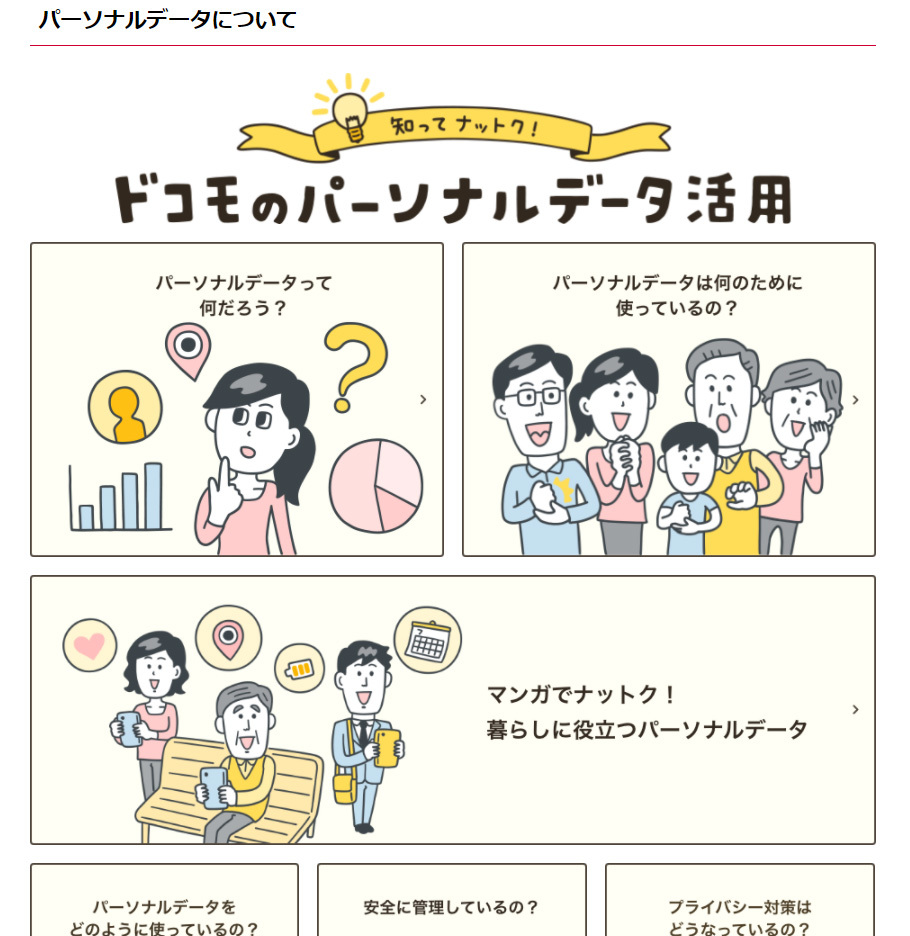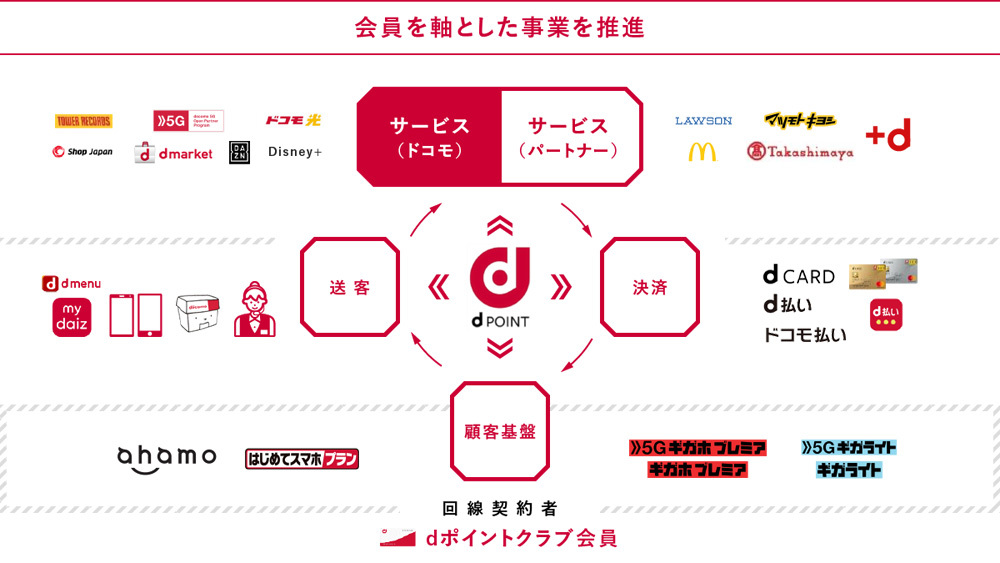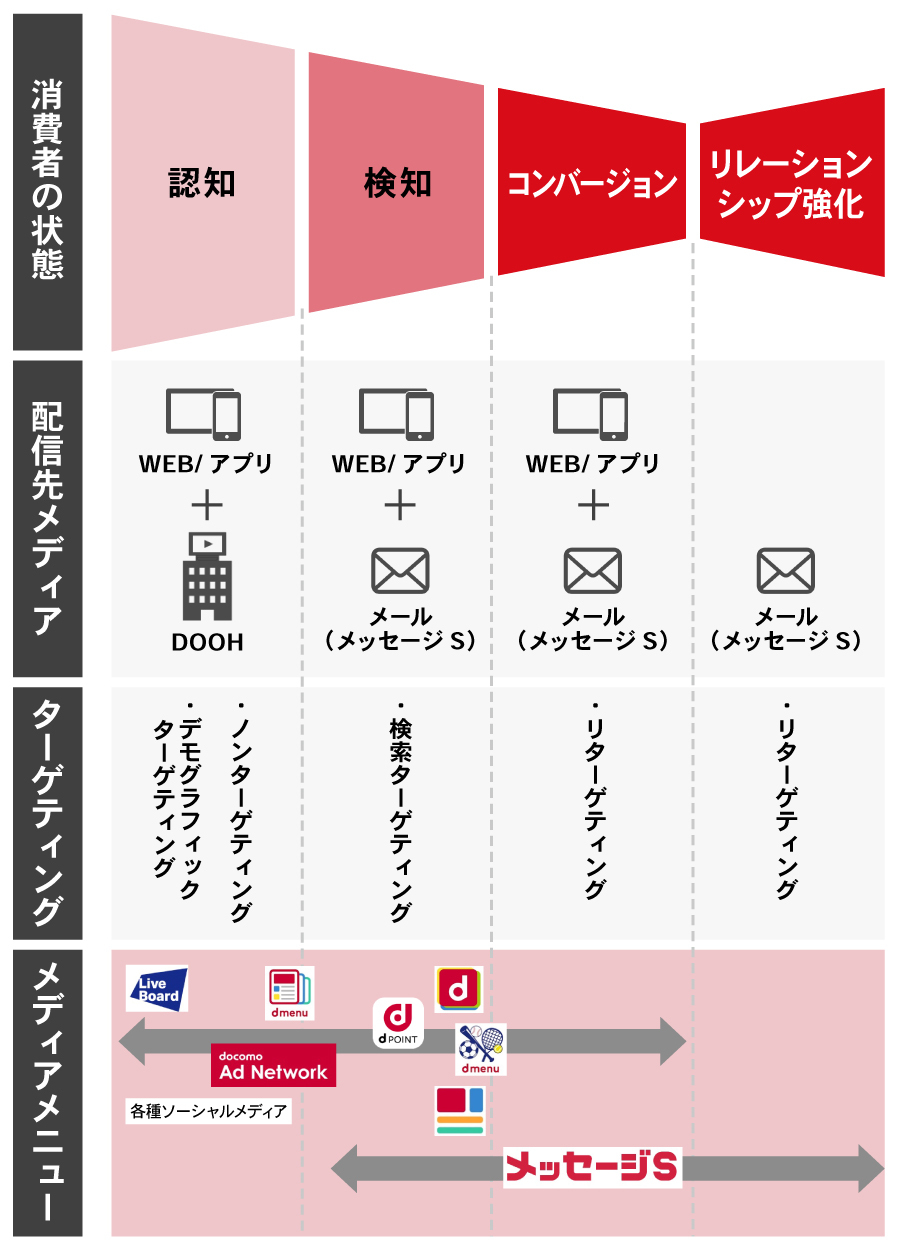Amidst the trend toward personal information protection, the world of digital marketing—which has long relied on third-party cookies—is poised for significant change.
With the arrival of the "cookie-free era" ( see previous article ), where creating a good customer experience and respecting user privacy are more important than ever, many marketing professionals are likely grappling with what steps to take next.
This series explores the potential and appeal of "data clean rooms" – enabling advanced digital marketing equivalent to or surpassing traditional methods while protecting user privacy – using NTT DOCOMO's "docomo data square" as an example.
This time, we invited Yoji Hayashi, who promotes the utilization of NTT Docomo's data-driven marketing solutions, as our guest. Dentsu Inc. Data & Technology Center planner Sadatomo Kinoshita interviewed him, focusing on the value of "Docomo Data" and "Docomo Media."

Dentsu Inc. Sadatomo Kinoshita & NTT DOCOMO: Hiroyoshi Hayashi
It is crucial that users can always check what they have agreed to
Kinoshita:As we discussed last time, with the "cookie-free" era becoming a reality, it feels like various paradigm shifts are occurring in the worlds of digital marketing and data. Mr. Hayashi, who has been working on data utilization at NTT Docomo, what are your thoughts?
Hayashi: I agree. Protecting user privacy is becoming increasingly important. However, I believe this "protection" is only achievable when we have a situation where "we can appropriately manage and utilize the personal data provided by users."
To this end, DoCoMo has established the "NTT DoCoMo Personal Data Charter" and handles personal data based on this charter. For data utilization, we obtain prior consent from users. Furthermore, to ensure transparency, we have provided the " Personal Data Dashboard " since 2019. This dashboard allows users to check "what they consented to" anytime via the web and opt out within certain limits. We also offer "Know and Understand! Docomo's Data Utilization," which clearly explains "how their data is being handled."
Kinoshita: I remember thinking this Personal Dashboard initiative was quite advanced when I first saw the news about it. At the time, there were few systems allowing users to easily and clearly check "how their data is being used" anytime, especially since some users were concerned about how their data was being utilized. I thought it did a good job of clearly communicating not only how data is used from a corporate perspective, but also the benefits from the user's perspective, even using manga and other methods.
"85 million members" and "large-scale offline data" are Docomo's strengths
Kinoshita: Regarding the data NTT Docomo possesses (hereafter referred to as Docomo Data), its major characteristics are the "types" and "volume" of data held. Working alongside them daily, I see how data from various services is linked per ID unit, and it truly feels like big data. From your perspective, Mr. Hayashi, what are the strengths of Docomo Data?
Hayashi: First, there are approximately 85 million "d Point Club members." As part of Docomo's strategy to expand the d Point Club membership, we've enabled more people beyond just Docomo mobile users to obtain a "d Account" and use Docomo's various services.
Of course, we also have strengths as a mobile carrier. For example, we can handle large-scale "location data" linked to individual IDs. Furthermore, because we offer payment-related services like "d Points" and "d Payment," we have the advantage of possessing purchase and usage data, including offline transactions.
Kinoshita: While e-commerce usage has increased during the pandemic, in-store purchases remain the mainstream. As cashless payments become more widespread, the importance of offline data is likely to grow even further. The launch of our data clean room "docomo data square," provided in collaboration with Dentsu Inc. since August 2020, also highlights "the ability to verify offline purchase and store visit effects across multiple media" as one of its key strengths.
This enables manufacturers and retailers, who previously struggled to gauge campaign effectiveness and plan subsequent strategies, to now conduct ID-level marketing.
What is "docomo data square"?
A data clean room provided by NTT DOCOMO and the Dentsu Group. As Japan's first initiative (※1), it enables ID-level (※2) measurement of the effectiveness from exposure to TV commercials, web ads, and digital OOH ads to actual product purchases. For details on data clean rooms, refer to the previous article.
※1 As of August 3, 2020, according to docomo research.
※2 An ID refers to any unique identifier assigned to a user, such as an account identifier or advertising identifier. The ID itself does not contain personal information like the user's name, address, phone number, or email address.

Hayashi: At docomo data square, we've achieved a world where offline purchase data from companies like Matsumoto Kiyoshi, Edion, and Takashimaya is connected at the ID level. This is in addition to the offline data NTT Docomo itself holds through services like "d point" and "d payment."
It is precisely because we have linked demographic information (attributes like gender and age) held by docomo with real-world activities like behavior and payments that we can now measure effectiveness across multimedia channels like TV commercials, digital ads, and DOOH.
Currently, the following are examples of media linked at the ID level (hereinafter referred to as Docomo Media).
■Examples of Docomo Media
- * " docomo Ad Network (docomo ADNW)": A service enabling delivery to ad slots close to payment points, such as the "d Point Club App".
- " Message S," an email-type ad enabling communication with rich information at the right timing
- " LIVE BOARD," which networks outdoor DOOH by leveraging Docomo data like location information, enabling delivery with various targeting options and capturing key moments
Additionally,
- docomo data can be used to deliver content to partner media such as Facebook, Instagram, and Twitter
By combining these, for example,
- Promote awareness and interest among potential customers via Facebook and Twitter
- and then re-engage people near the store with LIVE BOARD or Message S.
- and provide the final push at the store using the d Point Club app.
- After purchase, send coupons usable on their next visit via Message S to encourage repeat purchases
This enables delivering useful information to users at appropriate touchpoints throughout various funnels, supporting promotional activities for manufacturers and retailers.
Related articles on "LIVE BOARD"
The Current State of "Programmatic OOH" Seen Through LIVE BOARD
It's Not Just Ad Delivery! The Future of "d Point × Sales Promotion" Using Data Clean Rooms
Kinoshita: Leveraging the wealth of Docomo data allows us to see the entire journey, from "ad delivery to various media" to "offline (physical store) purchases," which is a unique feature.
In just over a year since its release, many clients have adopted docomo data square.
- For the retail store sector: Visualizing ROAS across TV commercials and digital ads
- In the manufacturer sector, we've identified target profiles more likely to purchase, enabling implementation of distribution customer acquisition and product promotions.
and more. They're finding meaningful uses not just for "advertising," but also in the "sales promotion" domain, centered around purchase data. Is there anything Docomo would like to focus on moving forward?
Hayashi: In spring 2021, we launched the " docomo Advertising Sales Promotion Package " as a product that not only delivers information accurately and broadly but also provides "incentives that trigger user action."
Specifically, this product adds the option of "d Point utilization" to the "multi-media delivery leveraging rich data linked by ID" mentioned earlier. We hope this product, incorporating Docomo's assets, will be used for promotional initiatives by enabling advertising delivery, purchase measurement, and analysis.
Looking ahead, to further accelerate this initiative, we aim to continuously expand our data and media offerings. We will broaden touchpoints for product purchase information, exemplified by partners like Matsumoto Kiyoshi, Edion, and Takashimaya. Simultaneously, by increasing user contact points through Docomo Media and third-party media, we hope to provide a platform capable of meeting diverse needs.
Kinoshita: Utilizing data in the "promotion" domain is translating into better customer experiences for users, such as "receiving information they're interested in" and "getting great deals with d points." The evolving Docomo Data and Docomo Media platforms will certainly be ones to watch going forward. Thank you for your valuable insights today.













